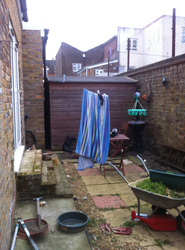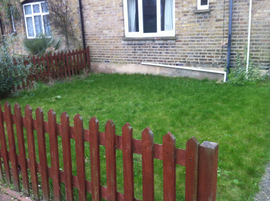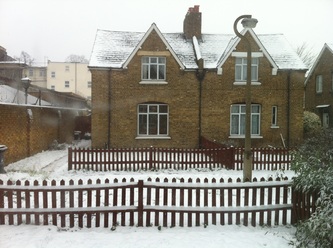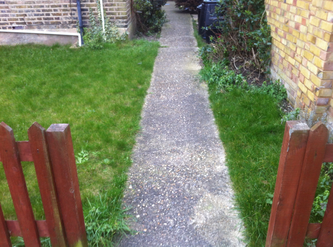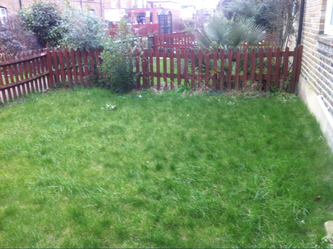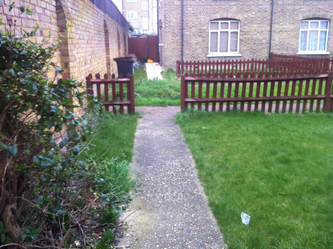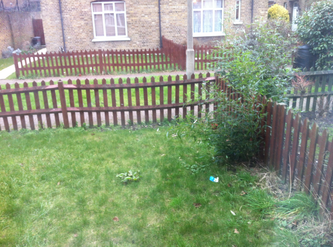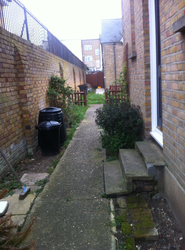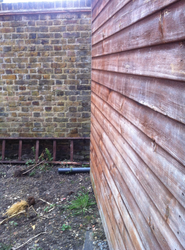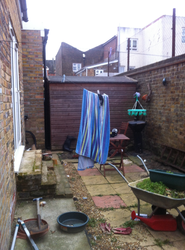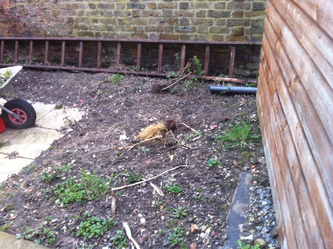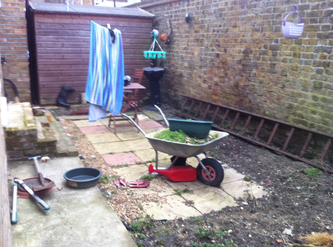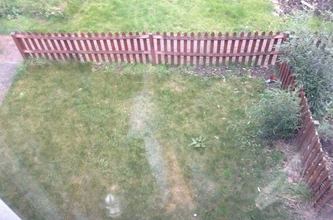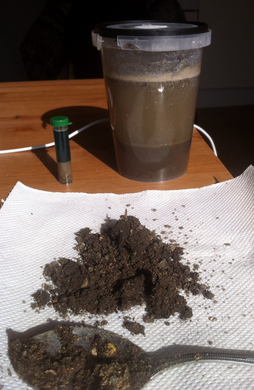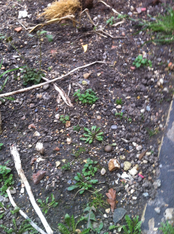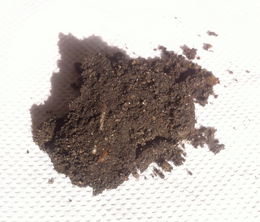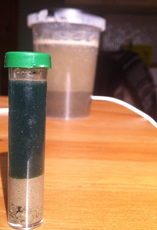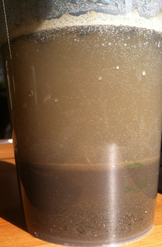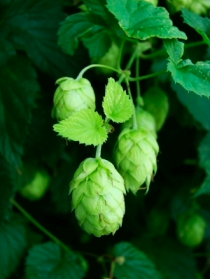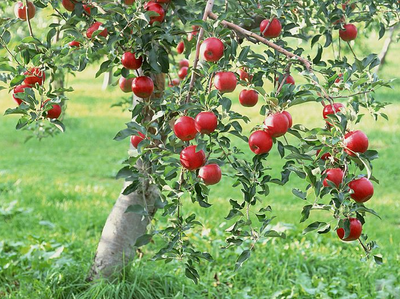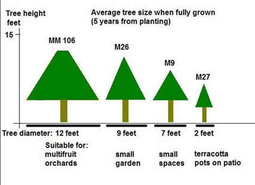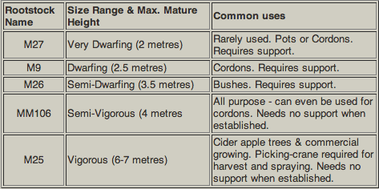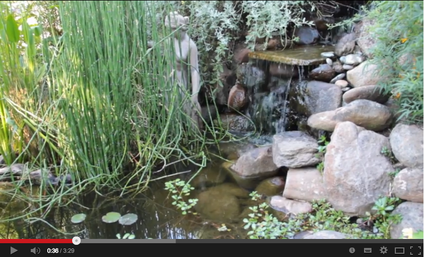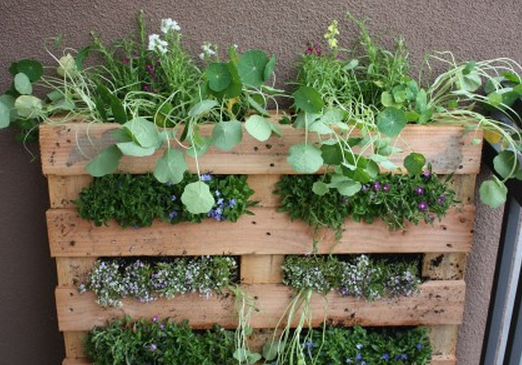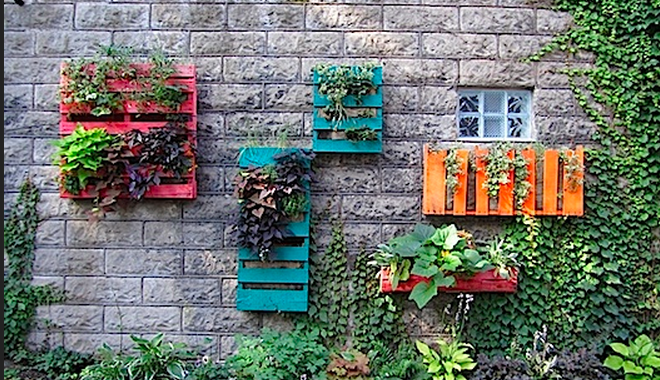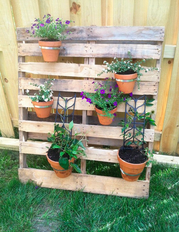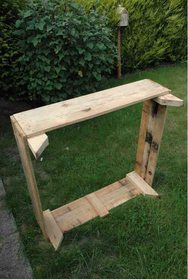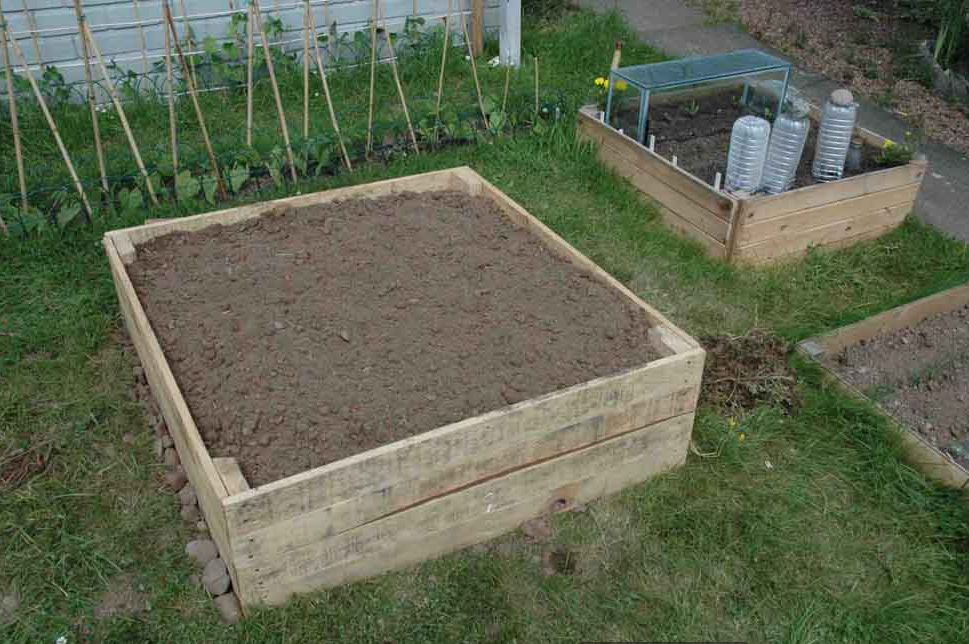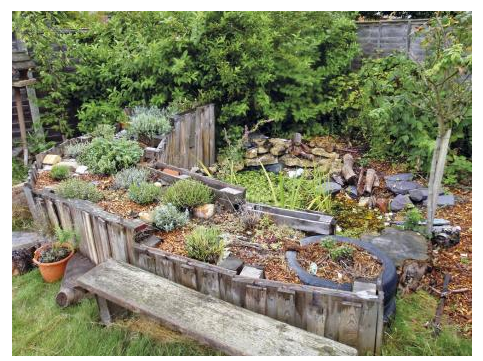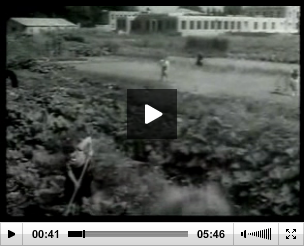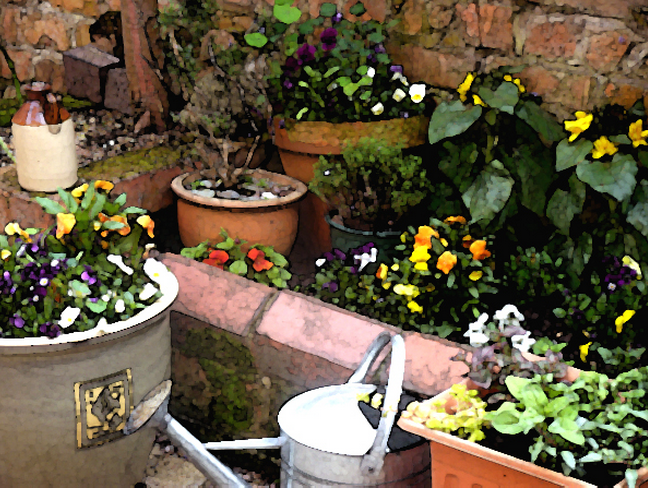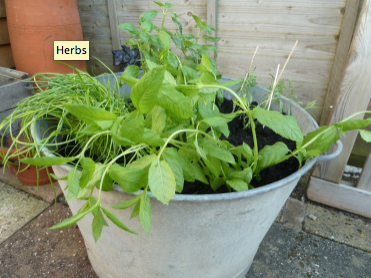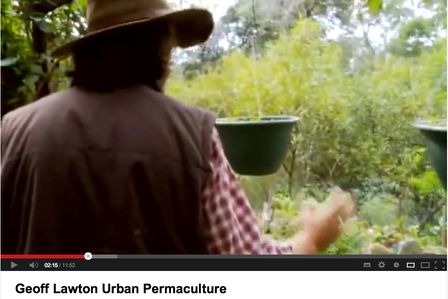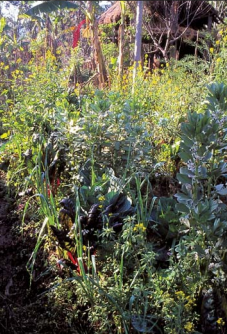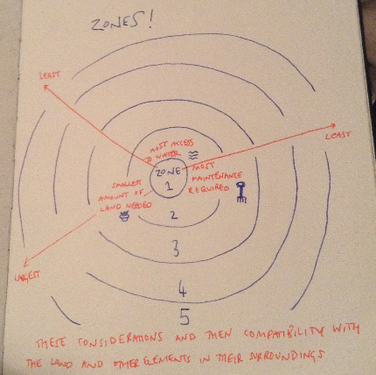Project Report Eight
House Garden Design
A design for a small front and rear garden of an urban semi-detached house
Survey
Goals articulation of the client. First I sent an email with questions to get some answers without my influence...
Do you have a vision or desire for your space?
Vision is to make the from garden both aesthetically pleasing, yet functional as a place to produce food. I don't want it to be too labour intensive on a daily basis.. I don't mind putting a lot of work in at the outset, but then the daily upkeep must be manageable
What would you like to see/grow?
I like onions! And fruit of course.. If we can train a hop plant in somewhere also that would be good..
What do you like to eat/use/do in the garden?
I'd like green veg, and hardy root veg. I like to potter, but it won't really be a place to sit and relax, I want to use the back garden for that.
How much time will you have for this space?
Like I said at the beginning I will have more time to do it.. A few weekends to get it up and running, then a few hours a week.
What resources do you have?
My shed is fairly well kitted out and we have a number of nurseries close by including big stores with garden sections such as homebase
Any unique requirements?
I'd like it to have a wartime feel, my cottage is a period bit of work and would like it to reflect that.
Aesthetic requirements shapes?
Aesthetically I'd like to be more than just functional and make use of the walls. I would like some raised beds and maybe look at my fencing that I have and change it to be more in keeping with the new style, should that be the case.
Anything that inspires you/that you've seen?
Inspiration has kinda come from your ideas that we have spoken about and my dads garden back home.
Can you see any limitations?
Limitations.. Not off the top of my head.. We get foxes quite a bit, and if we didn't I would have looked at getting chickens maybe?
Do you have a vision or desire for your space?
Vision is to make the from garden both aesthetically pleasing, yet functional as a place to produce food. I don't want it to be too labour intensive on a daily basis.. I don't mind putting a lot of work in at the outset, but then the daily upkeep must be manageable
What would you like to see/grow?
I like onions! And fruit of course.. If we can train a hop plant in somewhere also that would be good..
What do you like to eat/use/do in the garden?
I'd like green veg, and hardy root veg. I like to potter, but it won't really be a place to sit and relax, I want to use the back garden for that.
How much time will you have for this space?
Like I said at the beginning I will have more time to do it.. A few weekends to get it up and running, then a few hours a week.
What resources do you have?
My shed is fairly well kitted out and we have a number of nurseries close by including big stores with garden sections such as homebase
Any unique requirements?
I'd like it to have a wartime feel, my cottage is a period bit of work and would like it to reflect that.
Aesthetic requirements shapes?
Aesthetically I'd like to be more than just functional and make use of the walls. I would like some raised beds and maybe look at my fencing that I have and change it to be more in keeping with the new style, should that be the case.
Anything that inspires you/that you've seen?
Inspiration has kinda come from your ideas that we have spoken about and my dads garden back home.
Can you see any limitations?
Limitations.. Not off the top of my head.. We get foxes quite a bit, and if we didn't I would have looked at getting chickens maybe?
Sector analysis
Measure, draw up front and back
View, pathways, creatures, sunlight
Sectors
Sectors look at the natural factors that affect the land and the production levels of the land.
These natural factors are sun, wind, water flow and flooding potential, fire, slopes, soil types
and sacred lands. Sector planning is done to channel these natural factors into or out of a
system.
The knowledge gained from understanding the effects of these natural factors leads to planning
that will:
• Help to maximise yields
• Reduce mistakes made, for example, planting crops or trees which will get washed away
with the next heavy rains or floods
• Make the site more resilient and capable of facing disasters and extreme conditions
Measure, draw up front and back
View, pathways, creatures, sunlight
Sectors
Sectors look at the natural factors that affect the land and the production levels of the land.
These natural factors are sun, wind, water flow and flooding potential, fire, slopes, soil types
and sacred lands. Sector planning is done to channel these natural factors into or out of a
system.
The knowledge gained from understanding the effects of these natural factors leads to planning
that will:
• Help to maximise yields
• Reduce mistakes made, for example, planting crops or trees which will get washed away
with the next heavy rains or floods
• Make the site more resilient and capable of facing disasters and extreme conditions
What's there?
|
Back Garden
Structures- Walls on each side, shed on both ends washing line A ladder Patio slabs gravel concrete path Cat flap and back door Plants- grass, weak weeds around the edge Soil- Full of rubble from the extension, even though it has been sieved. Life- Mostly just the cats! |
Front garden Structures- Path along the side fence along two sides wall on one side of house Drainpipe from roof gutter Wall over path-gets much sun? Beds along three edges Plants- Grass, strong from turf. A few docks Ivy bamboo honey suckle perennial sweet pea? |
|
Soil
From a close look at the soil we can see a few things... Colour The soil is moderately dark, this can indicate that it has medium levels of fertility, aeration, erosion, organic matter and nitrogen as properties. The colour indicates it isn’t poor on all these fronts but it is not dark and rich by any stretch. Organic content I cannot see a great deal of organic material, composted or otherwise, so adding this would certainly help the soil of this garden to host more healthy plant, animal and microorganism life. PH A PH test shows that the soil is around 7.5. This is rather alkaline. The best region for plants to grow is around 6.5 Texture I can just about make a rod with this soil before it crumbles. It is very sandy which means it will not hold moisture or nutrients very well. Composition From the jar test we can see that it is about 60% sand, 45% loam and 5% clay. This means it is not going to hold water very well at all, and does not hold a great amount of nutrients. A typical extension style back garden, very sandy and lots of rubble and gravel. It is compact but light.
|
So now we can see that to get the best from this soil we will need to design to:
Raise the acidity Add organic content to increase fertility Add texture to hold water better, to aerate, Raise nitrogen levels Some ways we could do this: Choice of plants Mulch Natural fertilizer |
The survey section means to OBSERVE.
We have to decide the best way to do that for each project in order to minimalise effort designing and maintaining the final product.
I have been observing the garden for a year now, I decided that the best way to observe was to actually do a small amount of gardening, nothing that couldn’t be undone or moved, mostly soil enriching plants and annuals. I found this very useful because rather than just watching from a distance I could see what would happen in certain areas where it may have been too late if the design had been installed there. I know this is the permaculture way of the year of simply observing, but because it was mostly bare soil and the same weeds, growing simple things enabled me to see what would happen once I started to grow there, which wouldn’t have been possible if observed in the unused state. It helped me to observe:
Pests- I discovered something that I may not have realised whilst the soil was bare, that one of the cats really doesn’t like going far for the toilet. In fact, this bed is her favourite. She would scratch the soil off and uproot any small plants. When we put rock all over she didn’t, and once the plants grew big she didn’t. So this is worth thinking about, I will either have to raise the bed or just make sure there are either rocks or plants on any important beds.
Caterpillars- it was lovely to have so many butterflies in the garden- mostly cabbage whites in August, but this cased of course quite a few caterpillars…there were some natural predators in the form of wasps, which I attracted more with jam…this certainly kept the eggs down. I hand picked them off and sprayed garlic…this seemed to work. But I will be sure to plant some plants that will attract butterflies that they will prefer to lay their eggs on.
Slugs and snails- This year wasn’t so wet so less slimy creatures. However I have to make sure that there are not too many things for them to hide under in the back garden and remember that they come off the path in the front garden, so to not plant delicate things there.
Fox- There is a fox about, have to be careful what we leave about. It’s good to have the bins all together and secure.
Wild plants and influences I have noticed by working in the garden and removing more what to this garden could be considered ‘weeds’ that there are a lot of lovely plants that have come in from neighbouring gardens, and that they probably wont stop, so I should decide if I want to include them or not.
Bamboo from next door- is encroaching too much, I think I will have to find a way to keep it back, it does come through the ground however, so this will be tricky.
Wild rocket all over the shared section- it’s fast growing, coming back every time it is mowed and an instant add on to our salads!
Perennial sweet peas- these are lovely!
Water- is from the tap at the moment, this is not sustainable or cost effective. Must get a water butt. Also look at ways to help planters retain water
Soil- The soil is actually fairly healthy, the plants I grew this year were without any added nutrients apart from some used hops from the brewery mixed into the soil. There are a lot of worms, there is also quite a large amount of small rubble from the years of the house. I think we have taken out the biggest bits of this, the soil now needs organic matter to add more life and texture.
Sunlight- So the sunlight on the garden is interesting. Even though I worked out where it would be there were some interesting things that happened that I didn’t expect. I thought the back garden would get full sunlight all through the day in summer as the sun comes round the back, but it actually missed out bits at various times of day, and the back wall which was hot in spring ended up not getting enough sun in the mid summer, the plants there struggled, but understory and ground cover such as strawberries and fruit bushes were fine. The front garden gets sunlight in the morning and evening, and the walls to the side get nice and hot.
Propagation-
This is fairly hard, it was done on windowsills this year, but space ran out!! We would need a small closh or cold frame.
Resources
Budget?
Pallets
Many empty beer bottles
The ladder
Old things from the brewery
Crates
Spent hops and grain from brewery- hops are great mulch and grain great compost
Water from roof
Pallets
Water from cooking veg
Veg scraps
Lots of cardboard from bar
I have strawberries, herbs, leaf mulch, can get manure, straw? compost, compost bin
Boundaries/ limiting factors
Time- only really one day a week, but time to pop out and potter every morning, especially if he is more aware of the jobs that need looking out for
Sunlight and shade- This restricts the plants that we can put in certain areas
Fertile edges-there is a lot of vertical area to use up the walls, we can also use the heat from the walls.
There is not much edge where nature meets nature as the house is surrounded by bricks in various ways! But there is nice edge where the garden meets Gordon's next door, and I think this creates quite a nice nature corridor, dark and cool.
I would like to increase healthy edge within the garden
"Edges are places of varied ecology as they share resources between two distinct ecosystems and are known as a net and sieve for energy. We can increase the yield of the system by manipulating where two ecosystems meet, and designing in their unique species. Here the patterns of nature merge to utilize their inspiration with our creativity. "
Research
Here is some research into various elements that could be part of the design or that the client has mentioned he wants. We need to find out a bit more about what inputs they need and their potential in order to asess their appropriateness and positioning within the design.
Hops
We need
6-8 hours of sun -this should be fine on the house wall in back garden, faces SW
Hight to climb -fine on this wall
Trellis or string -easy to put in
Loose, well drained soil but with lots of water -could be positioned next to a water butt?
Seems to be fine in containers, plant in spring and train them up
Can be bought online
We need
6-8 hours of sun -this should be fine on the house wall in back garden, faces SW
Hight to climb -fine on this wall
Trellis or string -easy to put in
Loose, well drained soil but with lots of water -could be positioned next to a water butt?
Seems to be fine in containers, plant in spring and train them up
Can be bought online
Fruit trees
Can plant one, for best fruiting should be a self fertile variety look here for a list
Apple trees need full sun for proper growth and quality fruit production. The early morning sun is particularly important since it dries the dew from the leaves, thereby reducing the incidence of diseases. Apple planting sites should be free of spring frosts and have good air circulation.
Apple trees grow well in a wide range of soil types. They prefer soils with a texture of sandy loam to a sandy clay loam soil. Good soil drainage is also critical for successful apple production. Ideal soil pH for apple trees is near 6.5
Thinking about it more a pear tree may be a better idea, as the garden down the bottom of the street has a pear tree.
Can plant one, for best fruiting should be a self fertile variety look here for a list
Apple trees need full sun for proper growth and quality fruit production. The early morning sun is particularly important since it dries the dew from the leaves, thereby reducing the incidence of diseases. Apple planting sites should be free of spring frosts and have good air circulation.
Apple trees grow well in a wide range of soil types. They prefer soils with a texture of sandy loam to a sandy clay loam soil. Good soil drainage is also critical for successful apple production. Ideal soil pH for apple trees is near 6.5
Thinking about it more a pear tree may be a better idea, as the garden down the bottom of the street has a pear tree.
Pond
This year I noticed a damp corner of the garden where there was a lovely fern growing, and I put a pot of water in the ground to encourage wildlife, it would be good to expand on that. Here are some reasons why a pond is a good idea! So I would have to think about the plants to surround it with and how to keep it healthy. In a nutshell I could create a small pond like this. -Unfortunately the soil isn't clay enough to make a gley lining.
This year I noticed a damp corner of the garden where there was a lovely fern growing, and I put a pot of water in the ground to encourage wildlife, it would be good to expand on that. Here are some reasons why a pond is a good idea! So I would have to think about the plants to surround it with and how to keep it healthy. In a nutshell I could create a small pond like this. -Unfortunately the soil isn't clay enough to make a gley lining.
Pallets
Great for growing in or on, can make a large bed or smaller containers with them too.
Need to see how they have been treated, but probably the best idea for the beds as they are free
See here for more info
Great for growing in or on, can make a large bed or smaller containers with them too.
Need to see how they have been treated, but probably the best idea for the beds as they are free
See here for more info
Plant beds
I would like to work with the existing beds because there is a good reason why they are where they are. They are mostly at the edges so I may enhance them buy 'wilding' them a little, extending them hight-wise or increasing their edge area (making them wave etc.) There are a lot of options for how I could create the others, and I need to think about what would be best. Raised beds? Sides made with pallets, logs, bottles, shape and size, positioning etc.
For all these options I need to weigh up the pro's and cons ie- look for potential buyers, ease to mow around, if they decay!
This is quite urgent to work out because I need to start preparing the ground.
I would like to work with the existing beds because there is a good reason why they are where they are. They are mostly at the edges so I may enhance them buy 'wilding' them a little, extending them hight-wise or increasing their edge area (making them wave etc.) There are a lot of options for how I could create the others, and I need to think about what would be best. Raised beds? Sides made with pallets, logs, bottles, shape and size, positioning etc.
For all these options I need to weigh up the pro's and cons ie- look for potential buyers, ease to mow around, if they decay!
This is quite urgent to work out because I need to start preparing the ground.
War time garden
I really like the idea the client had about creating a war time feel aesthetically, and research into this may well offer up some elements of design that fit well with permaculture principals. The 'dig for victory' of the 1940's encompasses ideas of catching and storing energy...
Ok, permaculture ideas of growing can be vastly different from those seen in the film above, but using all available space like they did seems to be just common sense! So the idea of turning the front garden into a vegetable garden fits with this.
Some materials which would fit well would be: tin, wood, crates, wooden tools, proper ceramic pots, old jugs and jars, pipes!
I really like the idea the client had about creating a war time feel aesthetically, and research into this may well offer up some elements of design that fit well with permaculture principals. The 'dig for victory' of the 1940's encompasses ideas of catching and storing energy...
Ok, permaculture ideas of growing can be vastly different from those seen in the film above, but using all available space like they did seems to be just common sense! So the idea of turning the front garden into a vegetable garden fits with this.
Some materials which would fit well would be: tin, wood, crates, wooden tools, proper ceramic pots, old jugs and jars, pipes!
Planting guilds
I think the best idea is to do a selection of small guild islands around the garden, this way we can create a lot of edge whilst keeping the garden less of an overwhelming place for new gardeners.
The square where there was previously a shed (?) on the communal strip we have discussed would be good to contribute to in a permaculture way. The other people have maintained the beds lower down very well, so it would be nice to use this extra space. The square and the warm sunny wall with big space around it really lends itself to a fruit tree guild as the shade and eventual size of a tree would not effect much around it
Lawn health.
It is important to have some lawn in a modern garden, it is what people expect and like for relaxation and ease of maintenance. But there are ways that we can have people care and earth care at the same time I think. We can improve the wildlife and soil health whilst keeping this lawn. There is some info on this here.
Questioning elements-Gravel, is it useful? Should we get rid of it?
Concrete skirt to house- This was a mistake, the builders didn't understand what the owner meant, but it works well as a path round the house. The thin now is how to use it to it's best and HOW to make it more attractive. -Permanent planters?
I think the best idea is to do a selection of small guild islands around the garden, this way we can create a lot of edge whilst keeping the garden less of an overwhelming place for new gardeners.
The square where there was previously a shed (?) on the communal strip we have discussed would be good to contribute to in a permaculture way. The other people have maintained the beds lower down very well, so it would be nice to use this extra space. The square and the warm sunny wall with big space around it really lends itself to a fruit tree guild as the shade and eventual size of a tree would not effect much around it
Lawn health.
It is important to have some lawn in a modern garden, it is what people expect and like for relaxation and ease of maintenance. But there are ways that we can have people care and earth care at the same time I think. We can improve the wildlife and soil health whilst keeping this lawn. There is some info on this here.
Questioning elements-Gravel, is it useful? Should we get rid of it?
Concrete skirt to house- This was a mistake, the builders didn't understand what the owner meant, but it works well as a path round the house. The thin now is how to use it to it's best and HOW to make it more attractive. -Permanent planters?
| plant_guilds_ebooklet_-_midwest_permaculture.pdf | |
| File Size: | 2278 kb |
| File Type: | |
Mixed vegetable gardening. For this design I want to develop my abilities to design mixed systems. To put in the perennials but to have space around them to dot in the annuals every year as desired. This means taking into account sunlight, leaving space, companion plants, root depths and all sorts. But for each guild I will also have a list of selected annuals that would go well in that space every year in my design. Here is a good leaflet on mixed veg planting.
Assess
This is the point in which we assess what we have in conjunction to the goals to point us towards a design.
Water....
We will need to put in at least two water collecting devices. There are two places that these should be placed...
Front and back...
The front garden is more untouched as it is looked over by neighbours and not such a sun trap. It stands to reason then that this should be more like a zone 2, for growing things that are pretty and edible, but need less maintenance, water and more area to spread out.
It seems like it is important to create an area in the back garden for some private relaxation. It has been decided that to walk straight out of the back door onto grass is much more pleasing than patio. How can we make this an ingenious and beautiful place to entertain in the evening? Hops because he is a brewer! And because they need the sunlight and maintenance. How can we make the grass here more interesting? Plant wild flower seeds too? The back garden is right next to the kitchen, so whilst it is a good space for privacy and using that area for recreation, it makes sense to plant things here that are needed most often in the kitchen such as herbs and leaves. Using the pallets and recycled containers, and fixing them to the walls would be a good way of keeping slugs etc out and using the space well whilst adding decoration.
What to plant...
Given the lifestyle of out client and the fact that he doesn't have much knowledge of growing, or time, it makes sense to keep this space very simple, putting in plants that are very classic, abundant and easy to maintain.
These are the plants I have decided are appropriate and the reasons why. I will review back with him at this stage if he likes this selection.
Pattern to detail...
Given the sector analysis, the fact that he will still need to get around the garden with a mower I would like to propose that a shape like this is suitable. Perhaps keeping it to just one or two guilds given the plants that we have decided to plant
Water....
We will need to put in at least two water collecting devices. There are two places that these should be placed...
Front and back...
The front garden is more untouched as it is looked over by neighbours and not such a sun trap. It stands to reason then that this should be more like a zone 2, for growing things that are pretty and edible, but need less maintenance, water and more area to spread out.
It seems like it is important to create an area in the back garden for some private relaxation. It has been decided that to walk straight out of the back door onto grass is much more pleasing than patio. How can we make this an ingenious and beautiful place to entertain in the evening? Hops because he is a brewer! And because they need the sunlight and maintenance. How can we make the grass here more interesting? Plant wild flower seeds too? The back garden is right next to the kitchen, so whilst it is a good space for privacy and using that area for recreation, it makes sense to plant things here that are needed most often in the kitchen such as herbs and leaves. Using the pallets and recycled containers, and fixing them to the walls would be a good way of keeping slugs etc out and using the space well whilst adding decoration.
What to plant...
Given the lifestyle of out client and the fact that he doesn't have much knowledge of growing, or time, it makes sense to keep this space very simple, putting in plants that are very classic, abundant and easy to maintain.
These are the plants I have decided are appropriate and the reasons why. I will review back with him at this stage if he likes this selection.
Pattern to detail...
Given the sector analysis, the fact that he will still need to get around the garden with a mower I would like to propose that a shape like this is suitable. Perhaps keeping it to just one or two guilds given the plants that we have decided to plant
Sectors
Here is a detailed map of the garden as it is now, and a sector analysis overlaid.
Now let's mix this with the zones of the garden to see what it tells us
Here is a detailed map of the garden as it is now, and a sector analysis overlaid.
Now let's mix this with the zones of the garden to see what it tells us
Zones
Now that we have information about the site, we can create zones to fill in more clues about where to place our elements. Zones help us with placing based on our collection of knowledge about the site and the individual components. Based on how much water, maintenance and space and element needs, and how it's properties -inputs and outputs- are compatible with the land and other elements it will share with. Zones are not necessarily in concentric circles, for example, a space that is further away but passed by at least quite a few times a day like the garden gate could be a zone 2.
Now that we have information about the site, we can create zones to fill in more clues about where to place our elements. Zones help us with placing based on our collection of knowledge about the site and the individual components. Based on how much water, maintenance and space and element needs, and how it's properties -inputs and outputs- are compatible with the land and other elements it will share with. Zones are not necessarily in concentric circles, for example, a space that is further away but passed by at least quite a few times a day like the garden gate could be a zone 2.
So here are the the zones of the garden
I met with the client to investigate further...
It is important at this point to use your investigative skills to work out what is realistic etc Extracting the true goal means you wont waste time if you design to the real needs
So in summery, here is the goals articulation:
My goal for this design is also to fulfil the three ethics:
Earth Care- Caring for an area of land that has been taken up with housing and the ground left has been given poor treatment,
Regenerate the life of the land area by reducing Lawn and patio, and replacing with plants that are of use to the animals, insects, soil and air.
People Care- Looking after the people in the house (both current and future residents) by supplying more plants that absorb toxins, and that supply fresh food, beauty and space for relaxation and access to vitamin D!
Distribution of Surplus-Use this space to distribute my personal surplus of seeds and plants, and to start a chain where this garden can eventually redistribute it's surplus to the rest of the street.
I will show in a chart later which elements do this.
It is important at this point to use your investigative skills to work out what is realistic etc Extracting the true goal means you wont waste time if you design to the real needs
So in summery, here is the goals articulation:
My goal for this design is also to fulfil the three ethics:
Earth Care- Caring for an area of land that has been taken up with housing and the ground left has been given poor treatment,
Regenerate the life of the land area by reducing Lawn and patio, and replacing with plants that are of use to the animals, insects, soil and air.
People Care- Looking after the people in the house (both current and future residents) by supplying more plants that absorb toxins, and that supply fresh food, beauty and space for relaxation and access to vitamin D!
Distribution of Surplus-Use this space to distribute my personal surplus of seeds and plants, and to start a chain where this garden can eventually redistribute it's surplus to the rest of the street.
I will show in a chart later which elements do this.
Elements
After observing the garden and the needs of the client I have decided on the elements that are needed in the design to fulfil the goals and help the garden function well as a whole.
Plants------
Pond plants
A pear tree and guild
Wildflowers on lawn
Herb bed
Comfrey and other plants for nutrients
Appropriate plants in front border for more privacy. A meter high, easy to maintain, attractive, useful.
Position shed
Mostly perennials with space for annuals to be dotted in
Animals-----
Elements to deter cats, no bare earth
Attract bees and insects
add soil health
Structures-----
Water butt and pipe for collection
Compost-two bins for rotation, enough for house and garden compost
Area for dustbin and recycling. Needs to be secure and out of the wind, easily accessible but somewhere where it is more hidden for visitors.
Pond
permanent planters
Area for relaxing and BBQ out the back for privacy
A bed for vegetables
Tools-------
An area to keep tools, wheelbarrow etc, out of the way and safe but accessable
Place to keep bikes easily too
(Events) I'll substitute that for Activities-
After observing the garden and the needs of the client I have decided on the elements that are needed in the design to fulfil the goals and help the garden function well as a whole.
Plants------
Pond plants
A pear tree and guild
Wildflowers on lawn
Herb bed
Comfrey and other plants for nutrients
Appropriate plants in front border for more privacy. A meter high, easy to maintain, attractive, useful.
Position shed
Mostly perennials with space for annuals to be dotted in
Animals-----
Elements to deter cats, no bare earth
Attract bees and insects
add soil health
Structures-----
Water butt and pipe for collection
Compost-two bins for rotation, enough for house and garden compost
Area for dustbin and recycling. Needs to be secure and out of the wind, easily accessible but somewhere where it is more hidden for visitors.
Pond
permanent planters
Area for relaxing and BBQ out the back for privacy
A bed for vegetables
Tools-------
An area to keep tools, wheelbarrow etc, out of the way and safe but accessable
Place to keep bikes easily too
(Events) I'll substitute that for Activities-
Design
So from the analysis I have formulated a list of elements I would like in the garden, and things to consider. To work out where to place each thing I have put them into importance/amount used/attention needed=zones and their relationship to other elements=through inputs and outputs. I have also thought about how they relate to sector analysis=can they be used to harness energy passing through the site.
